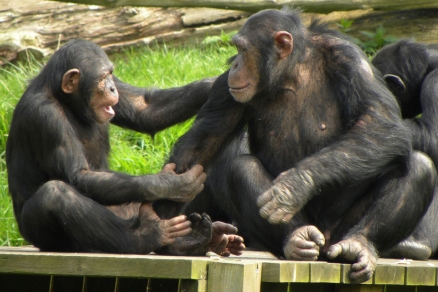Altruistic behaviors (Biology)

Introduction
Altruistic traits are traits that reduce the fitness (survival or reproduction) of the individual with the trait (known as the “actor”) while increasing the fitness of other individuals (known as the “recipients”). (Altruistic behaviors)
Examples of Altruistic Behaviors
A classic example of an altruistic behavior is the “warning call” given by many species of animals including ground squirrels, prairie dogs, and passerine birds. If an individual observes an attacking predator it may give a call that has two effects. First, when other nearby individuals hear the call they recognize that danger is near and flee to safety. Individuals that hear the early warning (the recipients) benefit by having a decreased chance of being killed by the predator. However, by giving the warning call, the caller (the actor) delays his/her opportunity to flee to safety and attracts the attention of the predator, thus increasing the chance that the caller is killed by the predator. Other examples, of altruistic behaviors include group defense in many species of birds and mammals, the broken-wing display of ground-nesting birds, food sharing in many species, helping at the nest in passerine birds, and bees killing themselves when they sting an attacker.
Apparent Difficulty of Explaining Altruistic Acts by Natural Selection
At first glance, altruistic behaviors appear to be difficult to understand as to how altruistic traits could be produced by natural selection. Natural selection should favor organisms with traits that increase survival and reproduction in their environment (known as selfish traits). How can a behavior that decreases the chance of an organism surviving or reproducing increase in frequency in a population?
Theories to Explain Altruistic Behaviors
Three hypotheses have been developed to explain altruistic behaviors. Historically, altruistic behaviors were explained by group selection which theorized that organisms had traits that assured the survival of the species. Modern biologists recognize that group selection does not work and have proposed two alternative hypotheses to explain altruistic behaviors.
Kin selection is a hypothesis developed by W. D. Hamilton to explain altruistic acts among close relatives. The kin selection hypothesis recognizes that an individual can pass on copies of their genes by reproducing themselves, but that they can also pass on copies of their genes by helping their close relative (who share some fraction of genes in common with them because of descent from a common ancestor) reproduce more than they would have without their help. Whether or not an organism should be selected to be altruistic is conditional on the number of recipients helped, the closeness of the relationship between the actor and recipients (the degree of relatedness), the benefit that the recipients receive, and the cost paid by the actor. Hamilton developed a mathematical formulation, Hamilton’s Rule, which examines the conditions favoring altruism.
In many species, organisms are altruistic among non-relatives. Altruistic acts among non-relatives can be the result of reciprocal altruism. Reciprocal altruism can be interpreted as 'I will be willing to be altruistic towards you now, if you are willing to be altruistic towards me later on'. Thus, an individual is willing to pay a cost now in hopes of receiving a benefit in the future.